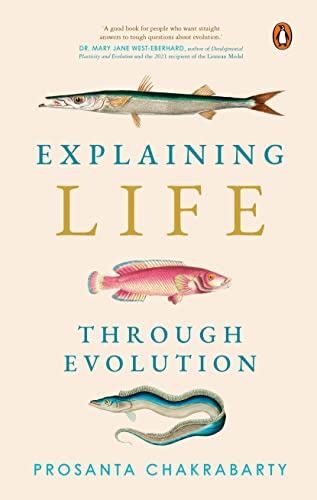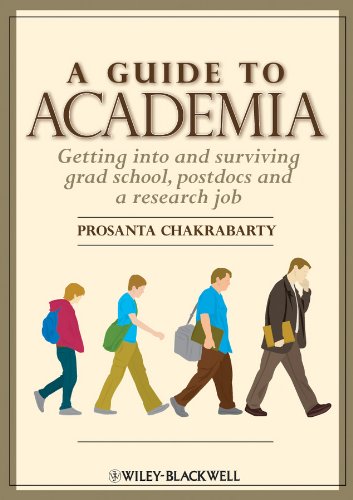Prosanta Chakrabarty
E.K. Hunter Chair & Professor | Biological Sciences Curator of Fishes | Director, Museum of Natural Science Louisiana State University
- Baton Rouge LA
Dr. Chakrabarty is a natural historian who studies fishes to better understand Earth history and evolution.
Areas of Expertise
Biography
Research Focus
Fish Systematics & Evolutionary Biogeography
Dr. Chakrabarty’s research focuses on fish systematics, evolutionary biogeography, and the diversification of cave, deep-sea, and freshwater fishes worldwide. He blends global field expeditions, museum-collection curation, and genomic–morphological phylogenetics to chart Earth’s aquatic biodiversity and guide conservation of imperiled lineages.
Education
University of Michigan, Ann Arbor
Ph.D.
Ecology and Evolutionary Biology
2006
McGill University
B.S.
Applied Zoology
2000
Accomplishments
Phi Beta Kappa Visiting Scholar
2025
Fellow, The Linnean Society
2024
Fellow (National), The Explorer’s Club
2024
National Geographic Certified Educator
2021
Fulbright Distinguished Chair (Ottawa)
2020
Media Appearances
Devil ray season is back on the Gulf Coast. Here's what to know about these 'puppies of the sea.'
NOLA.com online
2025-08-03
Louisiana's ongoing heatwave has sent residents racing to beaches along the Gulf Coast just in time for a lucky few to spot packs of mobula rays, also known as "devil rays," dappling the oceanfront.
I discovered a cavefish that we named ‘big sickness’ – for good reason
The Guardian online
2023-12-21
I’m a systematist, which is someone who studies the tree of life, figuring out who is related to who, often with DNA. Sometimes, we add new branches to the tree by discovering species new to science. I’ve described 15 species of fish, several of them cavefish. My favourite is Typhleotris mararybe from Madagascar, which means “big sickness” in Malagasy. It was the first time I’d gone into a cave and it should have put me off caving for ever.
Ask An Expert: An Evolution Education
Science Friday online
2023-06-04
A good grasp on the science of evolution is extra important these days, argues Prosanta Chakrabarty, author of the new book, Explaining Life Through Evolution, and curator of fishes at Louisiana State University. In 2008, Louisiana’s governor signed the Louisiana Science Education Act, which allows schools to teach creationism as an alternative to evolution.
Chakrabarty joins Ira to talk about the science behind evolution and take questions from listeners.
The murky world of cavefish
BBC Earth online
2021-04-21
Nature’s great beauty can also, at times, come hand-in-hand with great danger.
One person who understands this dichotomy well is Prosanta Chakrabarty. He studies fishes and evolution, and his pursuit of new species has led him into some dark and mysterious spaces.
“If you want to describe a new species or find something that hasn’t been discovered, you want to go to places where few people have gone before,” he says.
A brief but spectacular take on how animals and continents are interconnected
PBS NewsHour tv
2019-07-25
Although Prosanta Chakrabarty grew up in Queens, he always loved nature. The wonder of the world's creatures inspired him to study biology, a field that illuminates which of Earth’s beings are related to one another -- and how an event in a single location of this interconnected planet can cause global repercussions. Chakrabarty offers his brief but spectacular take on life on Earth.
Articles
Phylogenomic and Population Genomic Analyses of Ultraconserved Elements Reveal Deep Coalescence and Introgression Shaped Diversification Patterns in Lamprologine Cichlids of the Congo River
Systematic Biology2025
Understanding the drivers of diversification is a central goal in evolutionary biology but can be challenging when lineages radiate quickly and/or hybridize frequently. Cichlids in the tribe Lamprologini, an exceptionally diverse clade found in the Congo basin, exemplify these issues: their evolutionary history has been difficult to untangle with previous datasets, particularly with regard to river-dwelling lineages in the genus Lamprologus. This clade notably includes the only known blind and depigmented cichlid, L. lethops. Here, we reconstructed the evolutionary, population, and biogeographic history of a Lamprologus clade from the Congo River by leveraging genomic data and sampling over 50 lamprologine species from the entire Lake Tanganyika radiation. This study provides the most comprehensive species-level coverage to date of the riverine taxa within this lacustrine-origin clade.
Metabarcoding the Arctic Ocean Helps Reveal Its Hidden Microbial Community Composition
Turkish Journal of Fisheries and Aquatic Sciences2025
The Arctic Ocean supports a unique and dynamic microbial community, yet its composition, structure, and response to environmental shifts remain incompletely understood. In this study, 16S rRNA gene metabarcoding (targeting the V3-V4 and V4-V5 hypervariable regions) was used to assess surface water microbial diversity across 20 stations in the Barents Sea, focusing on latitudinal variations within two contrasting current systems: the West Spitsbergen Current (WSC) and the East Spitsbergen Current (ESC). Our results showed that the microbial community is dominated by three primary families—Pseudoalteromonadaceae, Moraxellaceae, and Flavobacteriaceae (14.20%). Comparative analysis of the V3-V4 and V4-V5 regions reveals that each region captures different aspects of microbial diversity, with V4-V5 detecting a higher number of unique families. Analysis through Nonmetric Multidimensional Scaling (NMDS) reveals distinct community separations between the WSC and ESC, though ANOSIM results indicate no significant within-system differences.
What ‘unexplored’means: mapping regions with digitized natural history records to look for ‘biodiversity blindspots’
PeerJ2025
We examined global records of accessible natural history voucher collections (with publicly available data and reliable locality data) for terrestrial and freshwater vascular plants, fungi, freshwater fishes, birds, mammals, and herpetofauna (amphibians and reptiles) and highlight areas of the world that would be considered undersampled and sometimes called ‘unexplored’(ie., have relatively low, or no evidence of, past sampling efforts) under typical Western-scientific descriptions. We also question what ‘unexplored’may mean in these contexts and explain how replacing the term in favor of more nuanced phrasing (eg.,‘biodiversity blindspots,’which emphasizes the lack of publicly available data about specimens) can mitigate future misunderstandings of natural history science. We also highlight geographic regions where there are relatively few or no publicly available natural history records to raise awareness about habitats that might be worthy of future natural history research and conservation
“The PO-Driven Model”: A Basic Science Pipeline for the Bioeconomy with Solutions Inspired by Convergent Evolution for Connecting Parallel Research Ideas
Integrative And Comparative Biology2024
Basic science research, also called “curiosity-driven research,” is fundamental work done with no immediate economic goals but rather a focus on discovery for discovery's sake. However, basic science research is often needed to seed more applied, economically-oriented, research. Both basic and applied research efforts are important aspects of the “bioeconomy” defined here as the contributions to the overall economy from various biology-related fields spanning everything from museum-based natural history research to agricultural food and material production to healthcare. Here we propose that more collaborative efforts across federal granting agencies in a venture-capitalist-like “PO-driven model” can help drive applied innovation from collaborations facilitated by Program Officers (PO).
Complete mitochondrial genomes of riverine Lamprologus (Actinopterygii, Cichlidae) with an emphasis on the blind cichlid L. lethops
bioRxiv2024
Lamprologine cichlids are a diverse group of fishes distributed in Lake Tanganyika and the Congo River. Nine species of Lamprologus occur in the Congo River basin including the only blind cichlid Lamprologus lethops, but little is known about the natural history and evolution of this enigmatic species. To alleviate this knowledge gap, we characterized the complete mitochondrial genomes of L. lethops and its riverine congeners and provided a phylogenetic hypothesis based on these data. We recovered complete mitochondrial genomes from eleven specimens of eight species of Lamprologus. Mitogenomes were identical in the number and order of genes and similar in size (16,579-16,587 bp). In contrast to previous phylogenomic studies, riverine Lamprologus were recovered in two non-sister mitochondrial lineages that were more closely related to other genera of Lake Tanganyika lamprologines than to each other.
Affiliations
- American Association for the Advancement of Science
- American Society of Ichthyologists and Herpetologists
- The Society for the Study of Evolution
- Society of Systematic Biologists
- Sigma Xi
- National Association of Science Writers
Research Grants
RAISE: A Phylogenomically-Based Bioinspired Robotic Model Approach to Addressing the Evolution of Terrestrial Locomotion
National Science Foundation
2019-2024
Imminent and Critical Integration and Renovations to Herps and Fishes at the LSU Museum of Natural Science
National Science Foundation
2016-2022
Collaborative Research: Not so Fast - Historical biogeography of freshwater fishes in Central America and the Greater Antilles
National Science Foundation
2014-2021
















